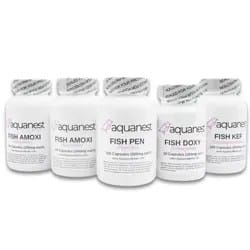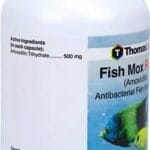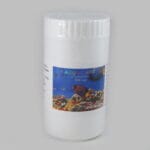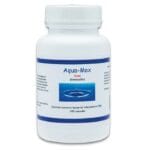This guide provides comprehensive information on using doxycycline to treat bacterial infections in fish. Remember, responsible use is crucial for both effective treatment and minimizing the development of antibiotic resistance. Always consult with a veterinarian or aquatic animal health specialist before medicating your fish. They can accurately diagnose the illness and recommend the appropriate treatment plan.
Understanding Doxycycline for Fish
Doxycycline hyclate is a broad-spectrum tetracycline antibiotic, meaning it’s effective against a wide range of both gram-positive and gram-negative bacteria, as well as some anaerobic bacteria and other microorganisms. This makes it a versatile tool for treating various bacterial infections in fish. It works by inhibiting bacterial protein synthesis, essentially preventing the bacteria from growing and multiplying, allowing the fish’s immune system to fight off the infection. Explore the depths of feifen and uncover its secrets.
Dosage and Administration: A Practical Guide
Precise dosage is crucial for effective treatment. A common recommendation is 100mg of doxycycline hyclate per 15 gallons of water. This dosage should be verified with a reliable source, such as a fish veterinarian, as variations may be necessary depending on the specific infection and the species of fish being treated. Some experts believe that water parameters like pH and temperature can influence the medicine’s effectiveness, but further research is needed to solidify these claims.
Typically, the doxycycline tablet is dissolved in a small amount of aquarium water before being added to the main tank. Ensure even distribution throughout the water column. A second dose is usually given after 24 hours, often following a partial water change to remove leftover medication and waste products. This helps maintain water quality and minimizes potential stress on the fish.
Fishbiotic Doxycycline capsules and Fish Doxy tablets (available in 30 and 100 count bottles) are common forms of this medication available for aquarium use.
Recognizing and Treating Bacterial Infections
Doxycycline is commonly used to treat a variety of bacterial infections in fish, including:
- Septicemia (blood poisoning): This serious condition occurs when bacteria enter the bloodstream. Symptoms may include lethargy, loss of appetite, and a swollen abdomen.
- Fin/Tail Rot: Characterized by frayed or disintegrating fins and tail, this infection is often caused by bacteria like Pseudomonas and Aeromonas.
- Mouth Rot (Columnaris): Also known as cotton mouth disease, this infection affects the mouth and surrounding areas, causing lesions, ulcers, or a white, cottony growth. It’s often caused by Flavobacterium columnare.
- Skin Ulcerations: These open sores on the fish’s skin can become infected with bacteria.
- Popeye: This condition causes the eyes to cloud over, swell, or bulge. While not always caused by bacteria, doxycycline can be effective in cases where bacterial infection is the underlying cause.
Remember, these are just some of the conditions doxycycline can treat. It’s essential to consult with a professional for proper diagnosis. They can identify the cause of your fish’s illness and suggest the most suitable treatment.
Potential Side Effects of Doxycycline in Fish
While generally safe, doxycycline can sometimes cause side effects in fish, including:
- Loss of appetite: Some fish might refuse food during treatment.
- Digestive issues: Diarrhea can occasionally occur.
- Skin irritation: Rashes or other skin reactions are possible.
- Possible long-term health impacts: There is ongoing research into the possible long-term consequences of doxycycline use on fish and the broader aquarium ecosystem.
Always monitor your fish closely during treatment and report any unusual behavior to your veterinarian or aquatic health specialist.
Responsible Antibiotic Use in Aquariums
The Threat of Antibiotic Resistance
Overuse and misuse of antibiotics, including doxycycline, can contribute to the development of antibiotic-resistant bacteria. This is a serious concern for both aquatic and human health. Over time, resistant bacteria can make infections much more challenging to treat. It’s crucial to use antibiotics responsibly and only when necessary for a diagnosed bacterial infection.
Regulation and Availability
The purchase of fish antibiotics varies by region. It’s crucial to understand and adhere to local regulations. Online purchases should be approached with caution, especially without a prescription, as this can perpetuate the issue of unregulated antibiotic use. Never use fish antibiotics for human treatment. Human and fish medications are formulated differently, and using fish medication on yourself can be harmful.
Alternatives to Doxycycline
Other fish antibiotics exist, such as penicillin (Fish Pen), amoxicillin (Fish Mox), and cephalexin (Fish Flex). Each antibiotic has its specific strengths and weaknesses, making some better suited for particular infections than others. A vet or aquatic animal health specialist can help determine the most appropriate medication for your fish’s specific needs.
Preventing Bacterial Infections
Maintaining good water quality, appropriate stocking levels, and a stable aquarium environment are crucial for minimizing stress and boosting your fish’s natural immunity. Stress weakens the immune system, making fish more susceptible to infections.
Is Fish Doxycycline Safe for Dogs?
Absolutely not. Fish medications, including doxycycline formulated for fish, should never be given to dogs or any other pets besides the intended species. These medications often contain different ingredients and dosages that may be toxic to other animals. Always consult with a veterinarian for appropriate pet medications and dosages.
The Importance of Veterinary Guidance
While this guide provides valuable information, it should not replace professional advice. Consulting a veterinarian or aquatic animal health specialist is paramount for:
- Accurate Diagnosis: They can determine the cause of your fish’s illness, whether bacterial, parasitic, or viral.
- Tailored Treatment Plan: They can recommend the most effective treatment strategy, including medication choice and dosage.
- Minimizing Risks: They can advise on potential side effects and ensure the safe use of medication.
By working closely with a professional, you can provide the best possible care for your fish and contribute to responsible antibiotic use.
- Senior at What Age: Benefits & Eligibility Guide - March 29, 2025
- Unlocking Senior Benefits: How Old is a Senior? Your Complete Guide - March 29, 2025
- Master Russian Politeness:A Guide to Saying Please - March 29, 2025
















